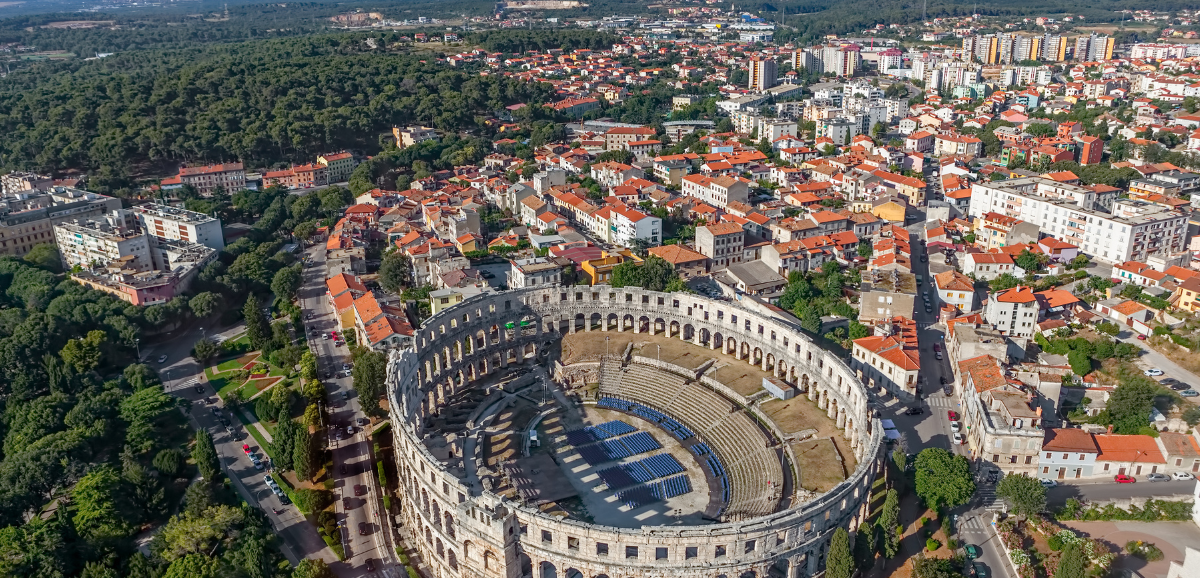Pula and Istria Apartment Sales — The Market Has Spoken: “Enough!
Are you thinking about selling an apartment or another type of property in Pula or Istria? Do you believe you’ve struck gold and are about to cash in handsomely?
Well, think again. Hidden behind the property listings is a reality that more and more people are starting to notice.
Market data clearly shows a growing number of properties — particularly villas with pools — languishing on the market for over a year without a buyer. So no, sales are not going as smoothly as you might expect given current asking prices. And if you’ve landed on this blog as a buyer, you’re likely already aware of the main reason: prices have skyrocketed. And not just into the stratosphere — but into another galaxy entirely.
Let’s address this issue head-on.
Prices Are Climbing — But Standards Are Not
You don’t need to be an expert in economics or politics to recognize that “something’s rotten in the state of Croatia.” Shakespeare may have once referred to Denmark, but today Denmark is one of the most well-organized countries in the world. And here?
According to Eurostat, property prices in Croatia have risen by 79.9% over the past decade. To put that into perspective: an apartment priced at €1,000 per square meter in 2015 is now selling for €1,800. That means a 45 m² apartment that cost €45,000 in 2015 is now priced at €81,000.
The result? Homeownership has become unattainable for many.
Why? Two key reasons:
- Salaries have not kept pace with property price growth (not just in real estate).
- The surge in property prices isn’t justified by any fundamental, sustainable factors.
Even foreign buyers — who have driven coastal demand in recent years — are increasingly walking away. (More on that later.)
As specialists in apartment sales in Pula and across Istria, we’ll focus here on the second point.

The Reality of Apartment Sales in Pula and Istria
Open any major property portal in Croatia — such as Njuškalo — and browse the listings. Many owners opting to sell their property independently advertise there.
But if you take a closer look and check how long these listings have been active, the truth about the market becomes obvious: some apartments, houses, and villas have been listed for over a year without selling.
How is it possible that prices are climbing while demand is falling?
The answer: it’s an illusion — one created by sellers who want to maintain high asking prices and avoid reducing them. In many cases, the prices of old apartments (resale) have reached the level of new construction. That’s absurd when you consider what new-builds offer: parking spaces, modern installations, superior insulation — just to name a few.
On top of that, advertised prices — even those listed by agencies — are often about 15% higher than true market value. Many portals hide key information, such as the time on market and the price per square meter, and many listings are poorly marketed. It’s no wonder these properties sit unsold for so long.
The price growth of the past decade was fueled by several temporary factors, most notably government-subsidized mortgage programs (APN) and the introduction of the euro. But with the economic slowdown spreading from Western Europe, the primary buyers of Croatian coastal properties — foreigners — are increasingly seeing these prices as too risky.
Be patient. These prices can’t hold forever.

So, What Should You Do?
If you’re selling property: be realistic. Demand has slowed, and clinging to inflated expectations won’t get your property sold. It will simply sit on the market while you continue to pay rising maintenance costs. Work with an agency that knows how to properly market your property and advise you on a fair, competitive price that will actually result in a sale. Alternatively, consult a certified appraiser with experience in the area.
If you’re buying: consider waiting until the end of the season. By then, sellers with unrealistic expectations are likely to lower their demands, and new opportunities will arise. Additional taxes on short-term rentals and similar government measures are likely to make holding such properties less profitable for many owners.
All signs point to 2025 bringing a halt to property price growth. There’s simply no more room for further increases.






